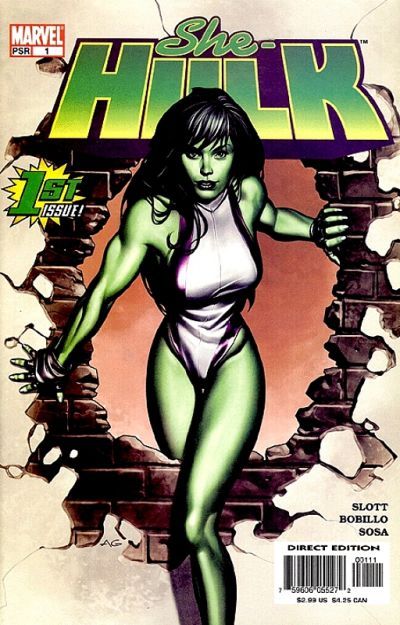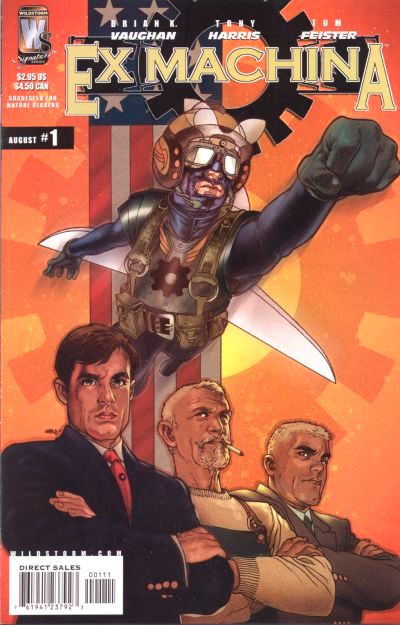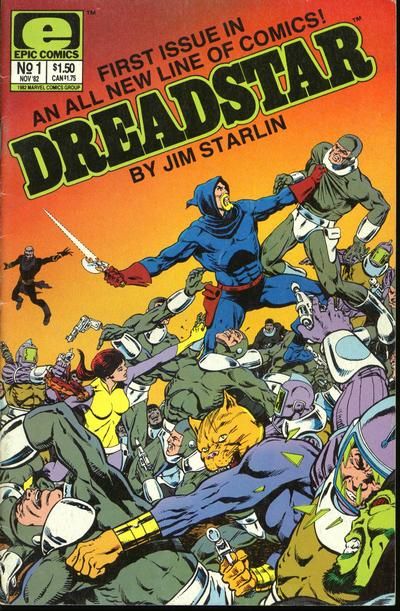Here are the final six runs!
Enjoy!
107 (tie). Mark Waid and Ron Garney's first run on Captain America - 89 points
Captain America #444-454
Followed up the rather disappointing end of Gruenwald's run with a bombastic flourish, as the title was suddenly filled with action and intrigue. The idea of returning Sharon Carter to the book was brilliant, and outside of a few issues where his inkers seemed to not be doing him any favors, Ron Garney's art was incredibly dynamic. This book was constantly moving and had a harder edge to Cap that hadn't been seen since Steranko (like threatening to chop Red Skull's head off, then actually chopping his arm off). It was a real shame when this was cut-off by Heroes Reborn. A year later, they got back together for a new volume of Cap, but while they were okay comics, the spark clearly had gone.
107 (tie). Dan Abnett and Andy Lanning's Legion - 89 points (4 first place votes)
Legion of Superheroes #122-125, Legion Lost #1-12, Legion: Worlds #1-6, The Legion #1-33
Abnett and Lanning joined the Legion with artist Olivier Coipel, and right from the get-go, you knew this was a vastly different take on the Legion (more akin to Giffen's Legion). They highlighted this by ending the regular series after their first arc and launching two mini-series that bridged the gap to their new series. First, Legion Lost, where a small group of the Legion are trapped in a faraway galaxy, and secondly, Legion Worlds, where we catch up on the various worlds in the Legion universe (and the Legionnaires on those worlds). This all leads to the ongoing series, The Legion, where Abnett and Lanning early on pull a Levitz/Giffen, and update a modern day DC villain to the future, in a rather brilliant move.
105. Dan Slott's She-Hulk - 90 points
She-Hulk Vol. 3 #1-12, She-Hulk Vol. 4 #1-21
Dan Slott took over She-Hulk, who had pretty much fell to the wayside by this time (she had been without a series for about 10 years), and tried a new take. He would highlight the lawyer side of her character, and turn the book into a superhero take on Ally McBeal. It was a wonderful high concept, and it worked out well, especially with Slott's hilarious sense of humor. Continuity would often be the butt of jokes, and after the first series fizzled out, sales-wise, Marvel decided to give him a second volume with more fanfare. That series did better, and it still continues today, although Slott left it recently to take over Amazing Spider-Man.
106. Brian K. Vaughan and Tony Harris' Ex Machina - 92 points (1 first place vote)
Ex Machina #1-current (#36)
Ex Machina is Brian K. Vaughan's take on what a superhero in the real world would appear like, as well as what would happen if a former superhero became Mayor of New York. In doing so, Vaughan gets to make points about superheroes AND politics (as opposed to politics and poker) while being ably assisted by Tony Harris' realistic artwork. They took an interesting approach vis a vis fill-ins. Rather than having fill-in issues, they would have one-shots by other artists to fill-in. This way, Harris would be the only artist to draw Ex Machina proper.
104. Frank Miller's Sin City - 93 points (1 first place vote)
Dark Horse Fifth Anniversary Special, Dark Horse Presents #51-62, then a pile of mini-series, including A Dame to Kill For, The Big Fat Kill and That Yellow Bastard
Sin City started off with a bang in Dark Horse Presents, as we saw the life of the gruesome Marv in this equally gruesome city. Later adventures brought in other characters with similarly gruesome tales of lust, betrayal and revenge. Oh, and lots of violence! Lots and lots of violence. Here, Miller truly perfected his noir art style, and the recent film adaptation of the work kept Miller's art intact, showing just how cinematic Miller was on this series. A beautifully drawn series of horrible acts.
103. Jim Starlin's Dreadstar - 94 points (1 first place vote)
Dreadstar #1-26 (Epic Comics), Dreadstar #27-40 (First Comics), plus some annuals and original graphic novels and the Metamorphosis Odyssey from Epic Illustrated
For a man with quite a few epics, Dreadstar probably was Starlin's finest - or at least his most realized. He had 40 issues to develop the story of Vanth Dreadstar (the lone survivor of our galaxy) and his band of pirates against the bloody war between the Church of The Instrumentality and the Monarchy. In a lot of ways, this was a continuation of Starlin's Warlock run, only with different characters, but it was a mature, often depressing work, with wonderful artwork by Starlin. What is striking about the work is that it follows the various changes that happen in the "real world," but are often left unseen in fiction (The Walking Dead was also designed for this point - showing what happens AFTER the end of most zombie films). What happens when the rebels actually WIN? How do things change? It's Starlin's most mature work, and it really could use a full trade paperback collection. Luke McDonnell, by the way, drew the last 8 issues or so, the ones detailing what happens AFTER the war is won. It is darker, so it makes sense to use a darker artist like McDonnell.
Okay, that's it!
Hope you all enjoyed the countdown!







